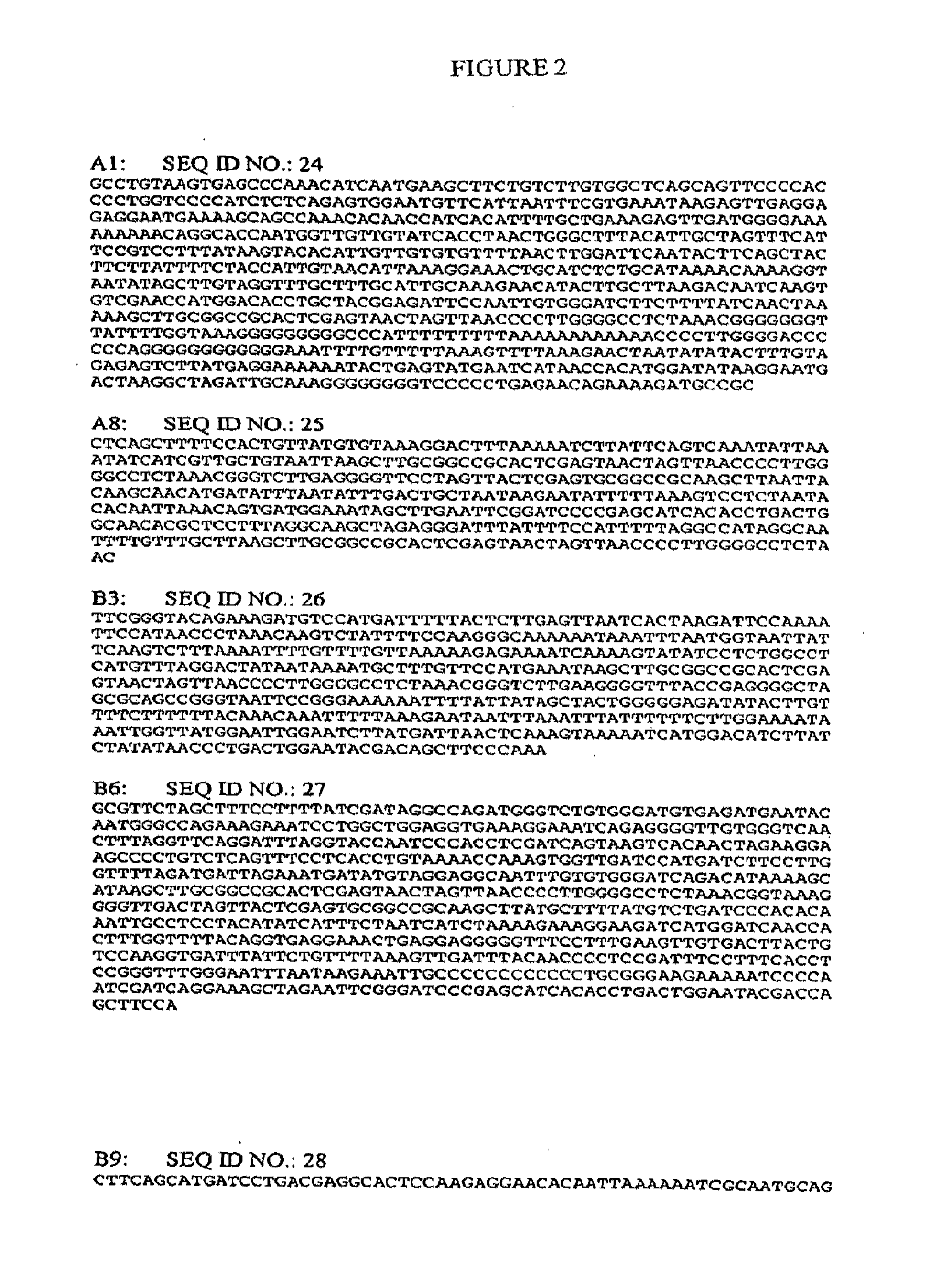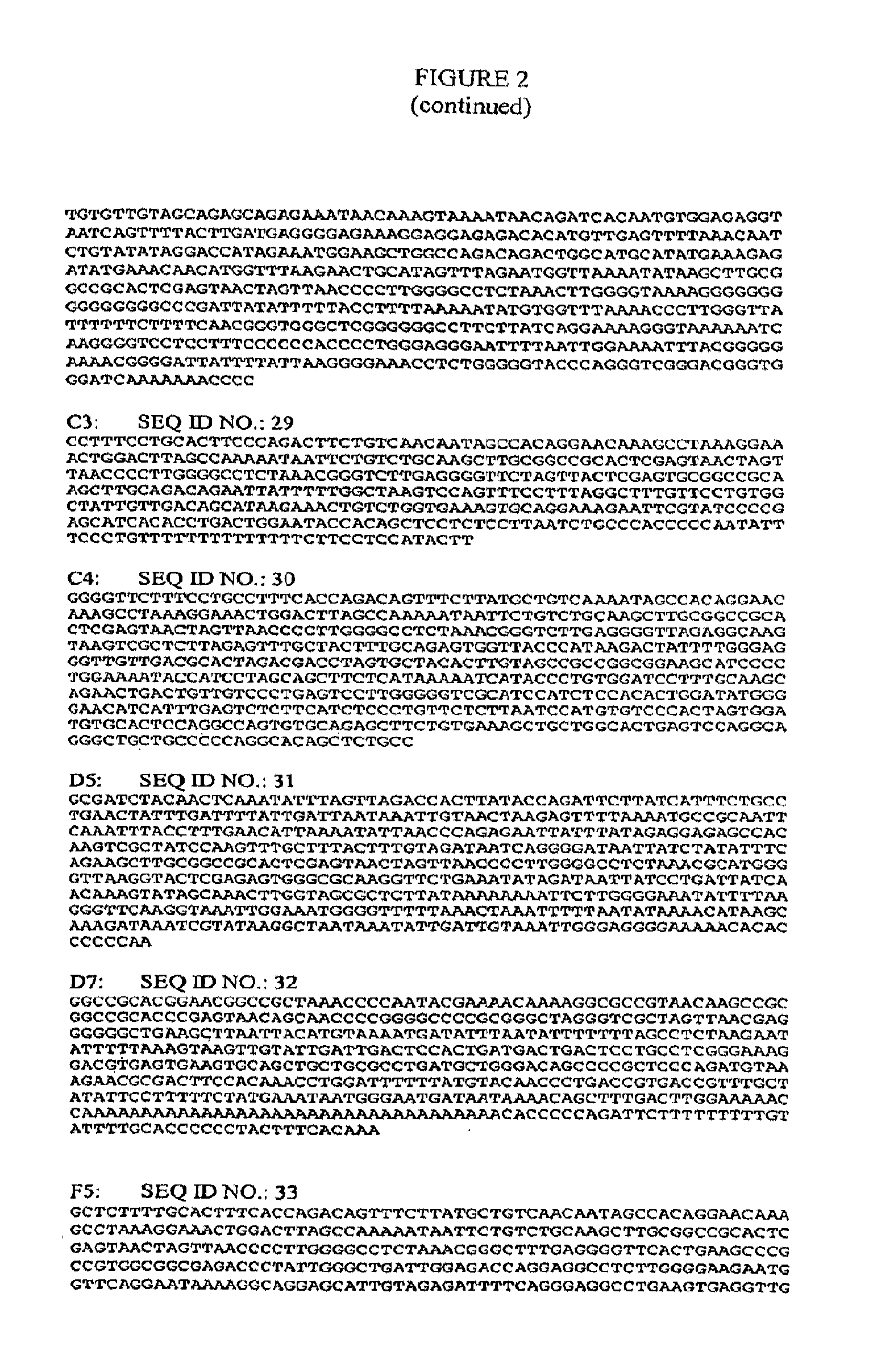Polypeptides that home to atherosclerotic plaque
- Summary
- Abstract
- Description
- Claims
- Application Information
AI Technical Summary
Benefits of technology
Problems solved by technology
Method used
Image
Examples
example 1
Generation of cDNA Phage Libraries
[0174]The specific strategy developed is based on the capacity to genetically alter millions of bacteriophage so that each phage expresses a single relatively large peptide. This is achieved by inserting a random library of millions of cDNAs into the genome of bacteriophage that have been specially designed so that each phage displays on its surface one copy of a single fusion protein of 100 to 1,000 amino acids. In an experiment to determine which peptides bind to endothelium within the target tissue (“fishing” for the phage), millions of genetically altered phage are injected into an animal. Those that bind to the tissue are isolated and expanded by infecting susceptible bacteria and harvesting the expanded phage particles. In aggregate, therefore, millions of different peptides can be examined as potential targeting molecules. Thus, the phage fishing technique, through the binding of phage-expressed ligands to tissue-specific endothelial receptor...
example 2
Homing to Atherosclerotic Plaques
[0178]For the selection of particles binding to atherosclerotic plaques, the genetically altered vulnerable plaque mouse model was used. It is thought that both vulnerable plaques and stable plaques are present in the vulnerable plaque mouse model. The plaques present in the mouse model are phenotypically similar to human plaques. These mice showed a number of type of lesions with marked inflammation, large necrotic lipid cores, thin fibrous caps, lipid laden macrophages, dissolution of elastic laminae neovascularization and intraplaque hemorrhage.
[0179]Polypeptides that home to atherosclerotic plaques were identified using the following protocol: (“phage fishing”)
[0180]Step 1: A human bone marrow phage display cDNA library, as described above, is injected into the vena cava inferior. Step 2: The brachiocephalic artery and the lesion it contained were identified and the lesion was scraped off and harvested. Step 3: Phage that had bound were expanded ...
example 3
Imaging in the Absence of Phage and Phage Protein
[0184]The assay was verified by determining that the identified ligands (polypeptides) homed to the target tissue when removed from the context of the phage and phage proteins and that these ligands could be used to image the target tissue. Images were obtained after i.v. injection of a recombinant homing polypeptide isolated by phage display of liver metastatic cancer cell cDNA libraries. The targeting polypeptide was linked with a 655 nm Q-dot. The images show the background, with gut fluorescence from food having a distinct spectrum, while the 655 nm scan (i.e., the Q-dot) with the liver lighting up brightly.
[0185]Other images show a time course measurement of the 655 nm scan signal appearance in different organs after injection of the Q-dot labeled protein. Upon injection the signal increases in the liver but does not increase above background in any of the other organs evaluated.
PUM
| Property | Measurement | Unit |
|---|---|---|
| Volume | aaaaa | aaaaa |
| Volume | aaaaa | aaaaa |
| Volume | aaaaa | aaaaa |
Abstract
Description
Claims
Application Information
 Login to View More
Login to View More - R&D
- Intellectual Property
- Life Sciences
- Materials
- Tech Scout
- Unparalleled Data Quality
- Higher Quality Content
- 60% Fewer Hallucinations
Browse by: Latest US Patents, China's latest patents, Technical Efficacy Thesaurus, Application Domain, Technology Topic, Popular Technical Reports.
© 2025 PatSnap. All rights reserved.Legal|Privacy policy|Modern Slavery Act Transparency Statement|Sitemap|About US| Contact US: help@patsnap.com



